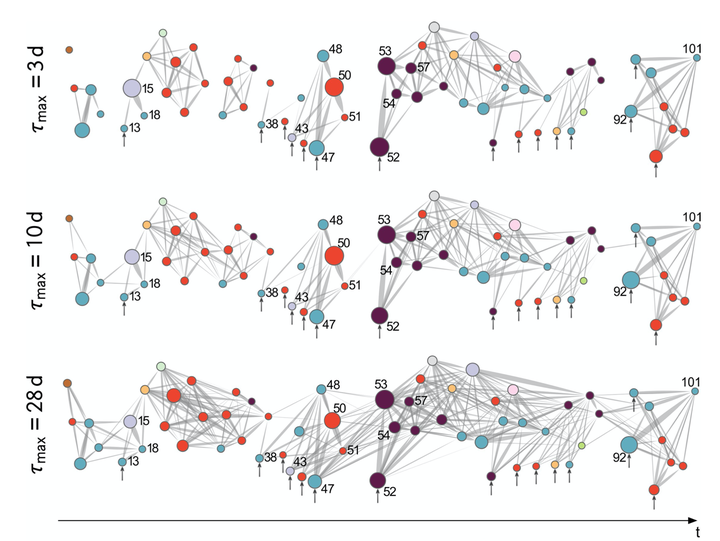Comprehensive integrated NGS-based surveillance and contact-network modeling unravels transmission dynamics of vancomycin-resistant enterococci in a high-risk population within a tertiary care hospital
Abstract
Vancomycin-resistant E. faecium (VRE) are an important cause of nosocomial infections, which are rapidly transmitted in hospitals. To identify possible transmission routes, we applied combined genomics and contact-network modeling to retrospectively evaluate routine VRE screening data generated by the infection control program of a hemato-oncology unit. Over 1 year, a total of 111 VRE isolates from 111 patients were collected by anal swabs in a tertiary care hospital in Southern Germany. All isolated VRE were whole-genome sequenced, followed by different in-depth bioinformatics analyses including genotyping and determination of phylogenetic relations, aiming to evaluate a standardized workflow. Patient movement data were used to overlay sequencing data to infer transmission events and strain dynamics over time. A predominant clone harboring vanB and exhibiting genotype ST117/CT469 (n = 67) was identified. Our comprehensive combined analyses suggested intra-hospital spread, especially of clone ST117/CT469, despite of extensive screening, single room placement, and contact isolation. A new interactive tool to visualize these complex data was designed. Furthermore, a patient-contact network-modeling approach was developed, which indicates both the periodic import of the clone into the hospital and its spread within the hospital due to patient movements. The analyzed spread of VRE was most likely due to placement of patients in the same room prior to positivity of screening. We successfully demonstrated the added value for this combined strategy to extract well-founded knowledge from interdisciplinary data sources. The combination of patient-contact modeling and high-resolution typing unraveled the transmission dynamics within the hospital department and, additionally, a constant VRE influx over time.
